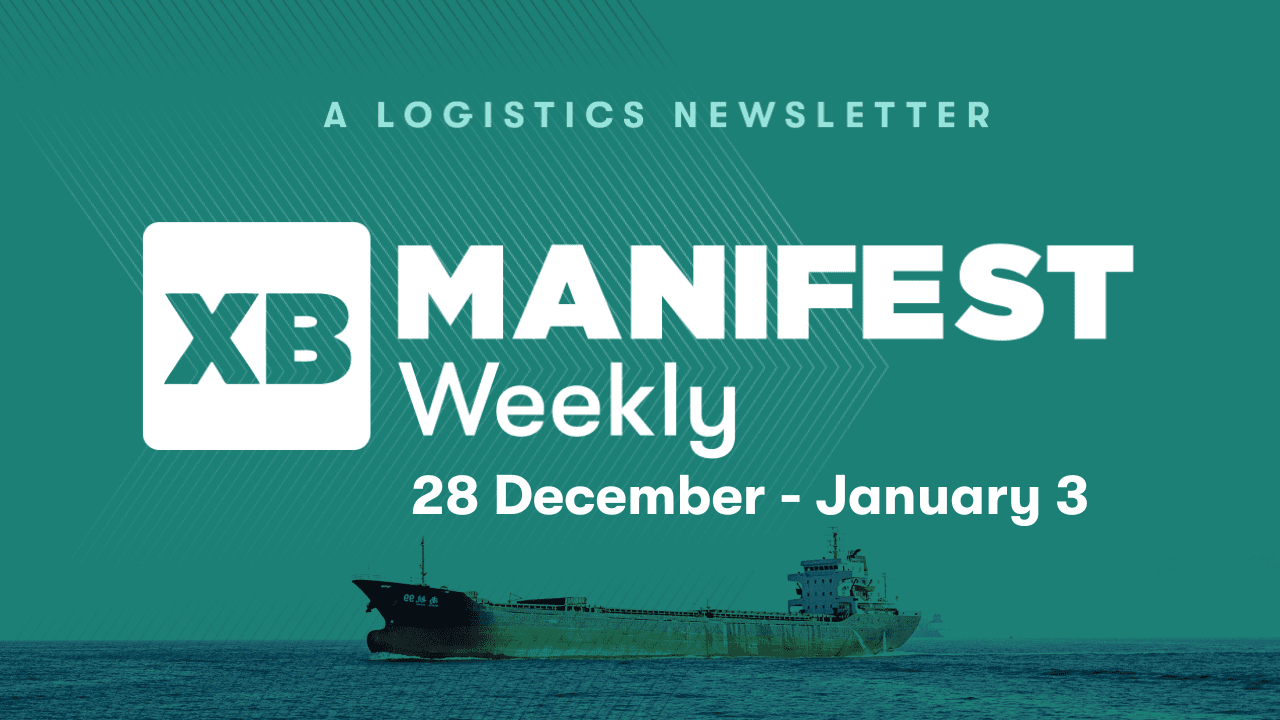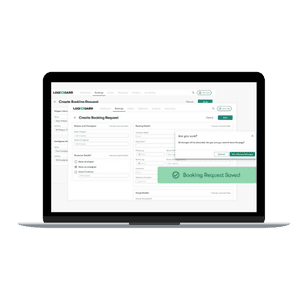Welcome to this year’s first issue of the Manifest Weekly. This week, we’re covering continued supply chain disruptions into 2023, the impact of the Fed’s interest rate hikes, and how retailers and supply chain stakeholders can mitigate post holiday reverse logistics trends.
IN THE NEWS
Supply Chain Disruptions May Continue Well In 2023-24, Says A CNBC Survey
Supply chain disruptions have been the norm ever since the COVID-19 pandemic spread across the world in 2020. Now that COVID has evolved into an endemic disease, black swan events like the Russia-Ukraine conflict, weather woes like Hurricane Ian, and more ensure that supply chains do not recover. As 2022 comes to a close, supply chain stakeholders might still expect disruptions to persist in 2023, according to experts.
Continue Reading
TOP HITS THIS WEEK
From The Manifest
Logixboard U: Introducing Bookings
With our upcoming Bookings feature, your customers can create bookings requests directly from the Logixboard platform. Check out the webinar to see it in action.
WHAT’S HAPPENING AROUND THE WORLD
Highlights
- The Federal Reserve’s rate hikes have made themselves felt in a big way among big money that invests in U.S. logistics real estate. But the aggressive monetary policy has, and is expected, to do little to change the increasing rate of investments expected in warehouse leasing in 2023.
- Smaller parcel carriers expanded capacity and coverage in 2022, maintaining the upsurge from 2021. Alternatives to FedEx and UPS bolstered their services and capabilities as they pursued a larger share of shippers’ volume.
- Mainland China’s reopening came sooner than expected for investors, and Goldman Sachs warns it will lead to short-term strains in the workforce and supply chains. The economists predict the Chinese yuan will only see marginal weakening to maintain 6.90-levels against the US dollar for the next 12 months.
- A year ago, shippers were desperate to agree annual contract deals with ocean carriers to secure their supply chains, and were prepared to do, and pay, ‘whatever it took.’ But 12 months on, the container liner shipping market has seen an 180-degree turn, and carriers are facing contract rates to match.
ON OUR RADAR
Trending
Every year, as the holiday and Christmas season begins, Halloween, Black Friday, and Cyber Monday lead up to really big discounts, ensuring that huge amounts are spent. But right after the holidays every year, as we slide into the new year, the deluge of returns begin. According to the National Retail Federation, $761 million in retail purchases were returned in 2021, up from $309 million two years earlier. In fact, retailers can expect costs including customer care, transportation, processing and liquidation to amount to nearly 60% of the sale price of a $50 item.
The five-day holiday shopping period from Thanksgiving Day through Cyber Monday generated a record 196.7 million shoppers across the US in 2022, and they each spent an average of $325.44, according to the National Retail Federation. That was a big boost for retailers, but also a reminder that the intoxicating level of holiday retail sales can leave a big hangover when it comes to returns.
The combination of online shopping habits and consumer-friendly policies have turned the nagging problem of returns into a major business concern– one that cuts into profit margins and undermines inventory planning and forecasting. Post holiday reverse logistics is a concern that every player in the supply chain is familiar with. The growing variety of items offered on e-commerce sites has exacerbated the problem, with a range of products from home goods and clothing to appliances and furniture vying for attention.
The first step in solving the problem is to appoint an executive responsible for the end-to-end returns process. And then a company needs to measure both customer satisfaction and the detailed cost of returns. Researchers at the University of Tennessee have broken the returns process into five “pathways” to help returns executives better understand improvement opportunities. These can be called pre-sale, initiation, induction, network & processing and disposition. The best way to mitigate returns costs, of course, is to find ways to limit returns before they happen, in the pre-sale process. But essentially, stakeholders need to study reverse logistics and figure how best to reduce returns to avoid and mitigate the whole mess.






